When we develop a new product we need to pass the EMC test. I really wonder what the current path during a electrostatic discharge test is.
Here is the test situation:
If the EUT (equipment under test) is a metal shell, is there a discharge path? If yes, what's the path going to? The ground?
If the EUT is not a metal shield (for example a plastic shell,) does a path exist? What's the discharge path?
Let's assume the EUT is a battery powered plastic shell device which has a PCB inside. When we do the electrostatic discharge test at a voltage of +-6.6kV, the discharge current has an influence on the device such that it causes it to work abnormal. So what's the discharge current path?
[updated] I added a new picture to assume the discharge current loop, that is my confusion.
Can I always find the discharging current loop in my test?
Q1 is easy to consider as the discharging current flows through the metal shell, but in the situation of Q2 I cannot find a current path.



